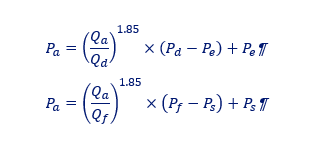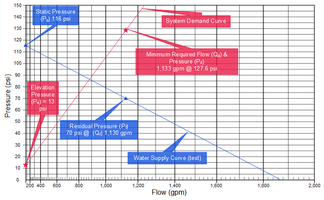jzembrodt56
New member
- Joined
- Nov 17, 2023
- Messages
- 5
I am struggling to solve for Qa in the following equation. Can anyone lend a hand? U was not sure how to enter N^1.85 so I apologize for the formatting.
[math](Q_a/Q_d )EXPONENT(1.85)×(P_d-P_e )+P_e = (Q_a/Q_f )EXPONENT(1.85)×(P_f-P_s )+P_s[/math]
These are equations for lines on a graph using an axis N^1.85 X-axis and I am trying to find the intersection so that I can plug the value for q back into my source equation. In my industry, we commonly find the solution by graphing the two lines. However, I would like to confirm the math behind it.
Thank you!
Josh Zembrodt
[math](Q_a/Q_d )EXPONENT(1.85)×(P_d-P_e )+P_e = (Q_a/Q_f )EXPONENT(1.85)×(P_f-P_s )+P_s[/math]
These are equations for lines on a graph using an axis N^1.85 X-axis and I am trying to find the intersection so that I can plug the value for q back into my source equation. In my industry, we commonly find the solution by graphing the two lines. However, I would like to confirm the math behind it.
Thank you!
Josh Zembrodt


